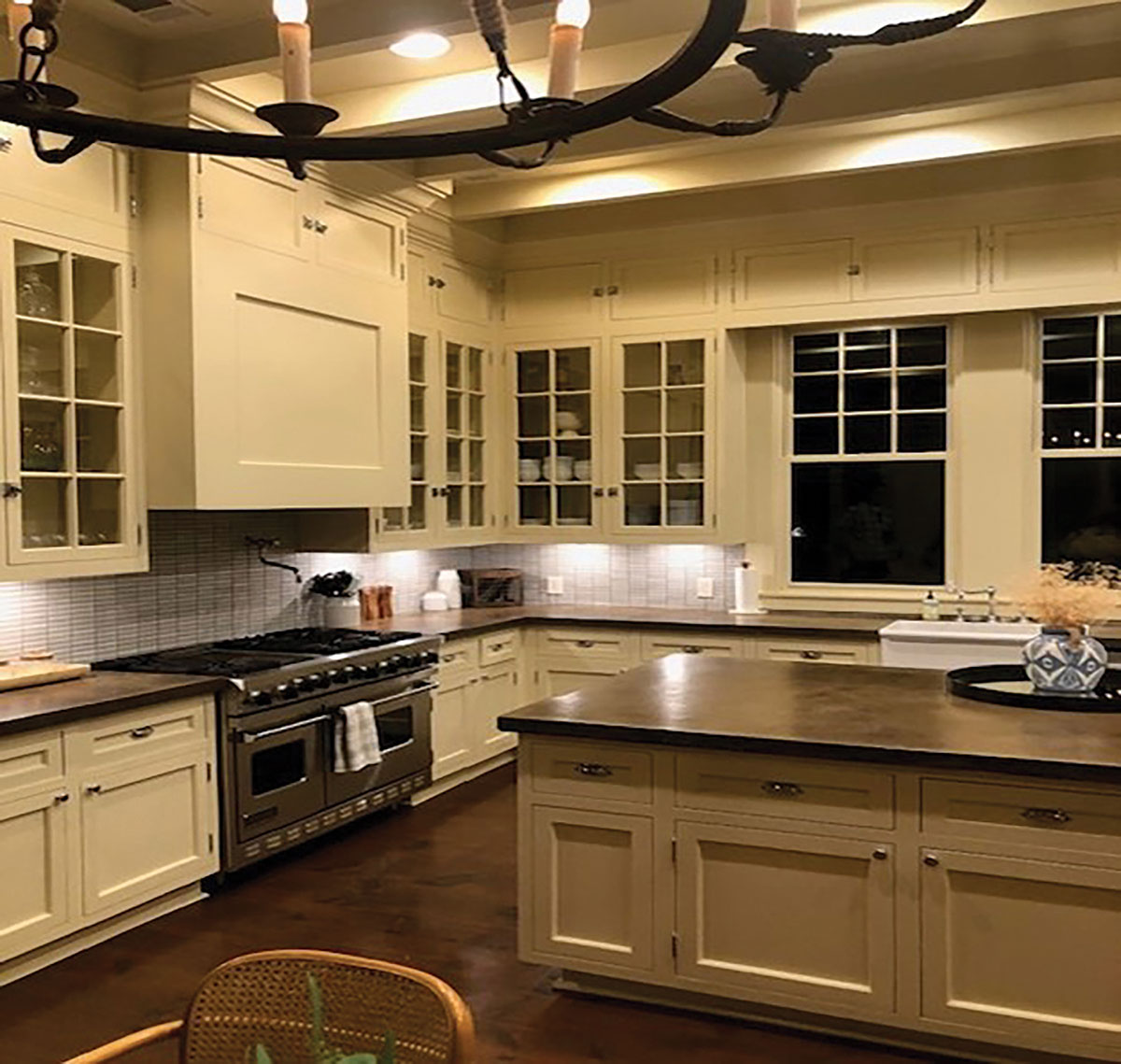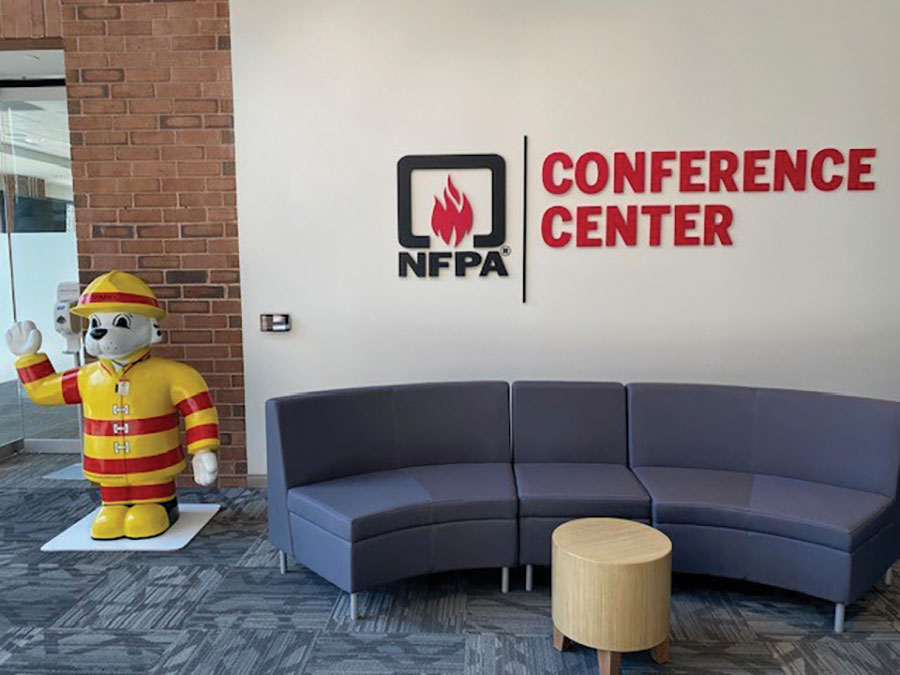Requirements for GFCI protection of receptacles in dwelling unit kitchens first appeared in the 1987 edition of the National Electrical Code© (NEC). This initial requirement was to provide GFCI protection for 125-volt single-phase 15 and 20-ampere receptacle outlets required by section 210.52(B) that are located above the kitchen countertops and within 6′ of the kitchen sink. Since 1987, GFCI requirements for kitchens have expanded to commercial kitchens in the 2002 NEC edition and to areas for food preparation, beverage preparation, or cooking that are not defined as a kitchen as found in sections 210.8(A)(7) and 210.8(B)(3) of the most recent 2023 NEC.
It is important to understand the full expansion requirements of the previous editions culminating in the 2023 NEC. We will focus on the requirements of the most recent editions, beginning with the 2017 NEC. The 2017 edition of the NEC only requires GFCI protection in dwelling unit kitchens for receptacles serving countertops or within six’ of a sink per section 210.8(A). Additionally, this requirement only applied to 15 and 20-ampere 125-volt single-phase receptacles. Beginning with the 2020 NEC, the rules changed. The 2020 NEC mandated that GFCI protection for receptacles in dwelling unit kitchens is no longer limited based on the ampere rating or voltage class of the branch circuit supplying the receptacle. GFCI protection is accordingly required for all receptacles supplied by a single phase 150 volt to ground branch circuit serving countertops or within 6’ of a sink. In this case, a 240-volt 50 ampere rated range receptacle installed within 6′ of a sink, as may be found especially in smaller or multifamily dwelling installations, will require GFCI protection.
The 2023 NEC has expanded further. The location of the receptacle outlet in the kitchen is no longer relevant to the proximity of a sink or whether the receptacle is serving a countertop for GFCI protection to be required. 210.8(A)(6) simply states “kitchens.” In short, all receptacles supplied by a single-phase branch circuit (120v), (120/240), or (120/208) in a dwelling unit kitchen will require GFCI protection.
In addition, certain appliances will require GFCI protection when wired directly or via cord and plug, as noted in section 210.8(D). Appliances supplied by a branch circuit rated 60 amperes or less and 150 volts to ground or less single or 3-phase, which include microwave ovens, wall-mounted ovens, electric ranges, dishwashers, and counter-mounted cooking units, will be subject to this requirement for GFCI protection. Code-making panel 2 recognized that these types of appliances generally have large conductive surfaces subject to contact by the appliance user. This could expose the appliance user to the effects of current leakage above the level that is considered safe for human contact that may be emanating from the appliance. Another level of hazard may exist in these locations as many of the appliances are often located above conductive floors, such as ceramic tile or near grounded appliances, sinks, or other grounded appurtenances.
Additionally, at dwelling units, GFCI protection shall be required in areas with a sink(s) and permanent provision for food preparation, beverage preparation, or cooking. The difference between this area and that of a kitchen is that a permanent means for cooking is not required to trigger the GFCI requirements. The inclusion of areas for beverage preparation in the new section 210.8(A)(7) will require what is often referred to as a wet bar at a dwelling unit as an example of an area that will require GFCI protection for receptacle outlets. The presence of a sink along with the preparation surface is the major identifying factor of this food or beverage preparation area. Previously, only 125v 15 or 20-ampere receptacle outlets that were installed within 6′ of the wet bar sink required GFCI protection. Now, all receptacles supplied by single-phase branch circuits rated 150 volts to ground or less, regardless of ampere rating or proximity to the sink, shall be GFCI-protected in this area. It should also be noted that any of the appliances listed in 210.8(D) must be provided with GFCI protection in these areas or in other locations at or in the dwelling as well.
Other Than Dwelling Unit Kitchens
How about other than dwelling unit kitchens and areas with sinks for food preparation, beverage preparation, or cooking? Let’s talk about other than dwelling unit kitchens first. Beginning with the 2002 NEC, GFCI protection expanded to other than dwelling unit kitchens. The requirement for GFCI protection as specified in 2002 NEC section 210.8(B)(3) applies to 15 or 20-ampere 125-volt single-phase receptacles installed anywhere in the non-dwelling unit kitchen. With the 2017 NEC came new requirements for GFCI protection. Section 210.8(B) required that all single-phase receptacles 150 volts to ground and 50 amperes or less and all three-phase receptacles 150 volts to ground 100 amperes or less be GFCI protected in other than dwelling unit kitchens, as noted in section 210.8(B)(2). The 2023 NEC brings us to the present. Though reworded for accuracy by addressing the rating of the branch circuit that supplies the receptacle rather than the receptacle itself, the practical effect is the same. In short, 125 through 250-volt receptacles supplied by single-phase branch circuits rated 150 volts to ground or less and 50 amperes or less and receptacles supplied by three-phase branch circuits 150 volts to ground and 100 amperes or less shall be GFCI protected. The practical effect is that nearly all commercial kitchen receptacles are required to be GFCI-protected.
It should also be noted that the appliances listed in section 210.8(D) will also require GFCI protection, whether directly wired or cord and plug connected in other than dwelling unit applications as well. This rule requires GFCI protection for the branch circuit or outlet supplying the appliances listed in section 210.8(D) that are rated 150 volts to ground, 60 amperes or less single or three phase. Remember this rule is about the protection of the appliance, so the location in the building is not relevant. GFCI protection is required wherever the appliance is located, subject to the voltage and ampere limitations of section 210.8(D).
Our last topic for discussion is areas with a sink(s) and permanent provisions for food preparation, beverage preparation, or cooking, as noted in section 210.8(B)(3). The practical effect of this code section is that a fixed piece of cooking equipment is no longer necessary to bring the requirement for GFCI protection into play. Often in employee break rooms, there is a sink, a refrigerator, perhaps a microwave, or similar appliances. This area would certainly meet the description as an area with a sink and permanent provision for food, beverage preparation, or cooking. The presence of a sink and a countertop space would alone be considered by many authorities having jurisdictions (AHJs) to require compliance with section 210.8(B)(3). Other areas, such as coffee kiosks, ice cream shops, and other similar areas, may fall under these requirements as well. Previously the presence of a permanent cooking appliance was needed to define these areas as a kitchen and thus trigger the requirements of 210.8(B) for GFCI protection. Without the presence of a permanent cooking appliance, this is no longer a kitchen; however, the rule of section 210.8(B)(3) applies the same GFCI requirements as a kitchen. Don’t forget there are several exceptions to sections 210.8(A) and 210.8(B) that should be considered.












Find Us on Socials